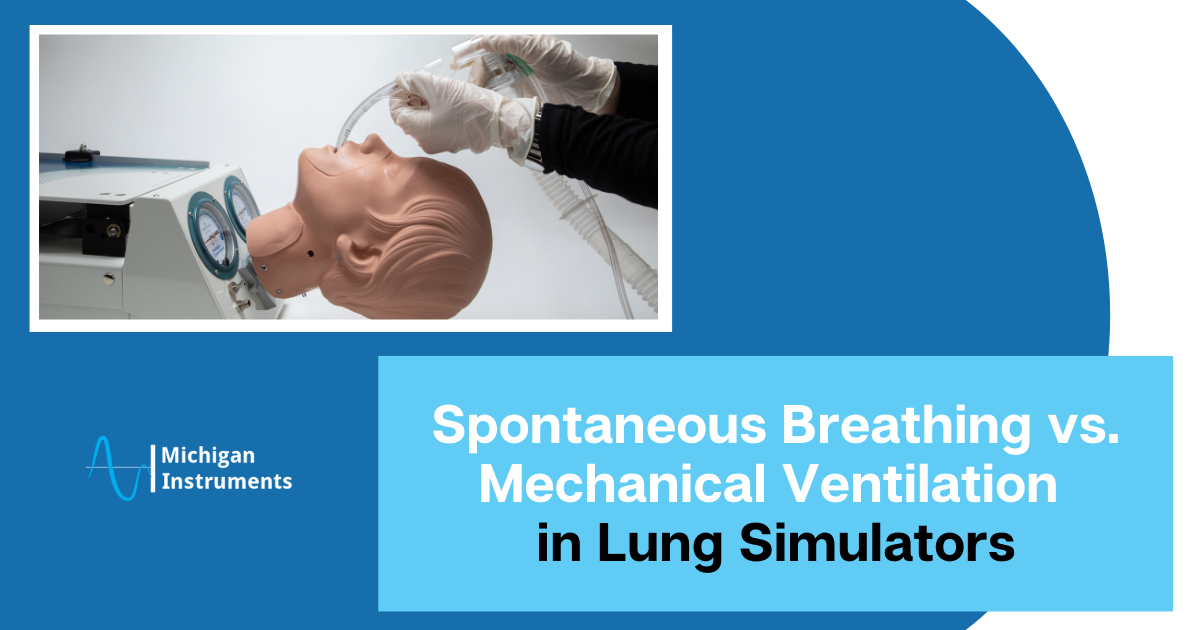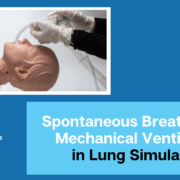
The human lungs work in miraculous ways. Whether your lungs function naturally, or you have a condition that requires breathing assistance, it’s important to make sure you have a healthy breathing process.
There are many ways the lungs can take in oxygen. Two of these ways include spontaneous breathing, and mechanical ventilation.
Below, we discuss how these breathing methods work, what the differences are, and how lung simulators can mimic both.
What Is Spontaneous Breathing?
Spontaneous breathing is a term used to describe psychological breathing.
Controlled by the involuntary nervous system, spontaneous breathing is a reflex. Healthy lungs will automatically breathe air in at all times, while we’re awake and while we’re asleep.
There are many ways that patients can keep their lungs in good shape to promote healthy breathing. These include, but are not limited to:
- Regular exercise
- Balanced diet
- Watching your weight
- Practice breathing exercises
- Keep the air inside your home clean
What Is Mechanical Ventilation?
Mechanical ventilation is a form of life support that helps you breathe when you can’t breathe on your own. It doesn’t directly treat illnesses, but it can stabilize you while other treatments and medications help your body recover.
Mechanical ventilation keeps your airways open, delivers oxygen and removes carbon dioxide. This treatment method dates back to the late 18th century. However, within the last century, it has become widely introduced into routine clinical practice.
Thus, it’s become much more sophisticated, expanding its application from the ICU to emergency medicine and even in long-term care.
Examples Of When Mechanical Ventilation Is Needed
There are several reasons why mechanical ventilation might be needed, including to:
- Deliver high concentrations of oxygen into the lungs
- Help get rid of carbon dioxide
- Decrease the amount of energy a patient uses on breathing so their body can concentrate on fighting infection or recovering
- Breathe for a person who has injury to the nervous system or who has very weak muscles
- Breathe for a patient who is unconscious because of a severe infection, build up of toxins, or drug overdose
How Our Lung Simulators Are Making A Difference
Michigan Instruments has played a role in the development and research for mechanical ventilation with our lung simulators. As respiratory care continues to grow and develop, Michigan Instruments continues to contribute with versatile, easy-to-set-up lung simulators.
All of our lung simulators, though versatile in capabilities, aid in the design, engineering, testing, and manufacturing of ventilation devices.
By offering a wide range of calibrated lung compliance and airway resistance settings, our lung simulators also simulate dynamic spontaneous breathing and breathing efforts. This flexibility allows our devices to replicate hundreds of healthy and diseased lung conditions, while providing highly accurate measurements and data.
Questions? Contact Us Today
For more information about how our lung simulators can benefit your institution’s research and treatment development, reach out to our team today!




